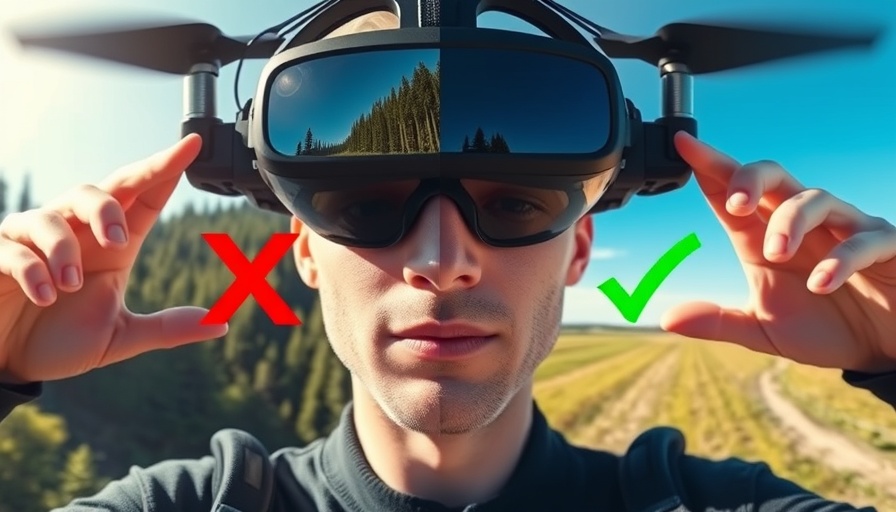
The Rise of Cheap Digital FPV Systems: A Game Changer?
The demand for affordable digital First-Person View (FPV) systems is on the rise as enthusiasts seek alternatives amid shifting market dynamics. With DJI's market presence dwindling and the increasing costs of HD0 systems, excitement grows around RunCam's Ruby and its potential impact on the open-source community. The RunCam VRX unit, priced at around $100, emerges as a frontrunner in this developing narrative, offering an intriguing solution for those wishing to try digital without breaking the bank.
In 'Cheap digital FPV vs Runcam Ruby VRX,' the discussion dives into emerging affordable digital FPV technology, exploring key insights that sparked deeper analysis on our end.
Breaking Down the RunCam VRX: Key Features
The RunCam VRX is designed with simplicity and effectiveness in mind. It conveniently connects to FPV goggles, eliminating the earlier cumbersome setups requiring a smartphone app. This usability advancement could significantly enhance user experience for drone racers and casual flyers alike. The integrated Ruby firmware brings additional functionality as it revolves around community-driven improvements, which can be crucial for tech enthusiasts longing for customization.
The Core Experiment: Does It Fly?
In testing, the standout question remained: how well does the RunCam VRX system perform in the field? Initial flights revealed mixed results. Early testers, including the seasoned pilot Stickman Steve, experienced frustrations with stuttering visuals and an inability to achieve a high-quality feed. While there was improvement over previous open IPC experiences, the competition, notably analog systems, still garnered a stronger favor due to reliability and image clarity.
Understanding the Trade-Offs: Image Quality Versus Performance
One of the biggest revelations during testing involved the balance between image quality and flight reliability. While the RunCam VRX offered a picture that was reportedly "much better than analog" in some instances, the overall experience fell short. As pilot feedback suggested, the FPV feed occasionally resembled pixelated remnants of a bygone digital age— leaving drone operators feeling trepidatious when navigating complex aerial environments.
Should You Dive Into Digital With RunCam? Pros and Cons
The choice to move toward digital FPV with the RunCam VRX isn’t an easy one. For enthusiasts eager to explore the possibility of open-source development, the system may seem appealing. Yet for everyday pilots, the investment might not yield the anticipated returns. Today's advancements bring a significant weight on reliability, and while the visual output can be captivating, existing analog setups still provide the consistency that drone pilots require.
The Final Verdict: Is It Worth It?
Ultimately, the RunCam VRX opens a conversation about the future of budget-friendly digital FPV systems. As the market continues to develop, advancements like Ruby may bridge gaps in reliability and quality over time. However, for now, many pilots appear to lean toward sticking with their proven analog gear, shouldering the trade-offs of lesser-quality visuals in favor of dependable performance.
Whether you're an industry professional evaluating tech advancements or a hobbyist looking to dip your toes into digital FPV flying, the RunCam VRX presents an intriguing opportunity that underscores the importance of ongoing development within the drone community.
 Add Row
Add Row  Add
Add 




Write A Comment